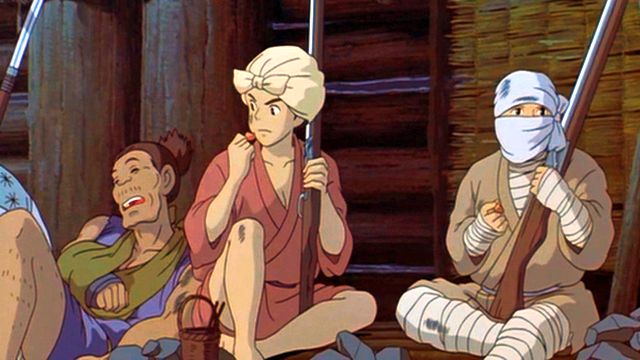Hayao Miyazaki confirms Princess Mononoke fan theory is true

Your support helps us to tell the story
From reproductive rights to climate change to Big Tech, The Independent is on the ground when the story is developing. Whether it's investigating the financials of Elon Musk's pro-Trump PAC or producing our latest documentary, 'The A Word', which shines a light on the American women fighting for reproductive rights, we know how important it is to parse out the facts from the messaging.
At such a critical moment in US history, we need reporters on the ground. Your donation allows us to keep sending journalists to speak to both sides of the story.
The Independent is trusted by Americans across the entire political spectrum. And unlike many other quality news outlets, we choose not to lock Americans out of our reporting and analysis with paywalls. We believe quality journalism should be available to everyone, paid for by those who can afford it.
Your support makes all the difference.Director Hayao Miyazaki has confirmed a long-running fan theory on 2001's Princess Mononoke to be true.
Urban legend, particularly in Japan, has led to the belief the "gyobyo" ("incurable disease") of the film is actually leprosy (Hansen's Disease); as evidenced by the number of characters covered in bandages residing in Irontown. The settlement they inhabit has become a refuge, established by Lady Eboshi, for those considered social outcasts; it is here they come into conflict with the forces of nature as they continually destroy the surrounding forests in the pursuit of iron.
"Gyobyo" additionally means "suffering the consequences", which may be a reference to the discrimination faced by the leprosy patients which lead them eventually to the embraces of Irontown. Indeed, a Japanese Studio Ghibli urban legend site notes how one of the patients says, "Eboshi was the only one who saved us, and let us stay here when we didn’t have anywhere else to go."
While speaking at Tokyo's International Leprosy/Hansen's Disease History Symposium, Miyazaki confirmed the film does indeed depict the disease. The Asahi Shimbun reports he based the "incurable disease" on his own visit to a sanitarium in western Tokyo, which he described as a place; "where deep suffering has accumulated."
"I wanted to portray people who were living with what was said to be an incurable disease caused by bad karma," he said of the film's bandaged characters. Miyazaki's comments draw deeply on Japan's lengthy history of stigma towards the disease, tied to the Buddhist concept that leprosy is a form of punishment on its sufferers. Until 1996, patients were forced to be segregated from society in sanatoria, with cases of sterilization also occurring; as reflected by the alienation felt amongst the leprosy sufferers residing in Irontown.
The conference, held on 31 January or World Leprosy Day, was intended to raise awareness of the disease; with further discussion taking place on the preservation of the history of facilities for leprosy patients.
Join our commenting forum
Join thought-provoking conversations, follow other Independent readers and see their replies
Comments